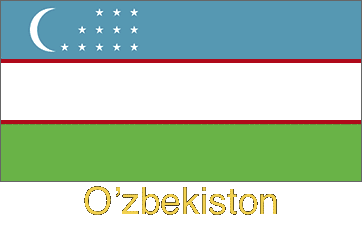Photos from Uzbekistan
| Home | About | Guestbook | Contact |
UZBEKISTAN - 2013
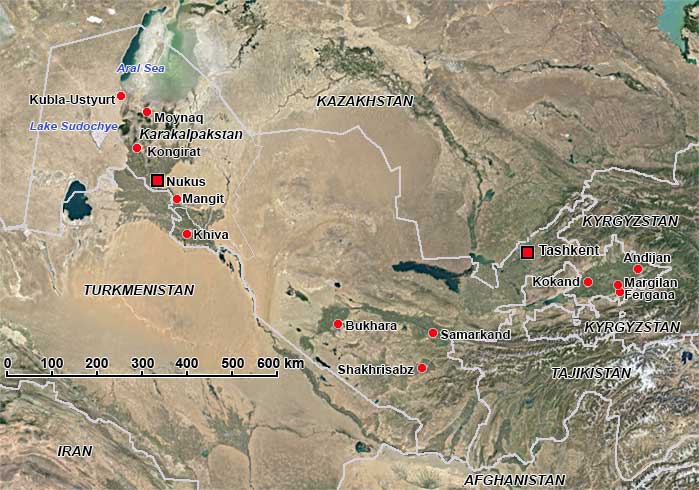
A short history of Uzbekistan

The Republic of Uzbekistan, formerly a Soviet republic, is a landlocked country in Central Asia; it has an area of 449,000 km² and contains, apart from its 12 provinces, the autonomous republic of Karakalpakstan. It shares a border with Kazakhstan to the north, Kyrgyzstan to the northeast, Tajikistan to the southeast, Afghanistan to the south and Turkmenistan to the southwest. Its capital city is Tashkent (Toshkent in Uzbek). The total population is around 33 million, consisting of around 84% Uzbeks, almost 5% Tajiks and small minorities of Kazakhs and Russians; a little over 2% are Karakalpaks, a Turkic minority living mainly in their autonomous republic in the north west. The origin of the name Uzbekistan is disputed: some think “Uzbek” (or O’zbek) is derived from the name of Oghuz Khagan, also known as Oghuz Beg, a legendary and semi-mythological khan of the Turks; others claim it means “Home of the Free”, taken from an amalgamation of uz (o’z, Turkic: “self”), bek (Turkic: “lord” and -stan (Persian: “land of”). The Uzbek language, written in Cyrillic script since 1940, has now been written again in Latin script since 1992, after independence from the Soviet Union.
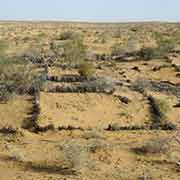
In ancient times this region was part of the predominantly Iranian-speaking region of Transoxiana (Land beyond the Oxus river, as it was known to the Romans) and the first settlers to this territory were nomadic Scythians, also known as Saka, a group of Iranian people who inhabited the western and central Eurasian steppes from about the 9th century BCE until about the 1st century BCE. They built an extensive irrigation system along the rivers and cities such as Bukhara (Buxoro in present Uzbek spelling) and Samarkand (Samarqand) emerged as centres of government and high culture. From the second century BCE China began to develop its silk trade with the West; Iranian cities took advantage of this commerce and became trading centres. As a result of this trade on the “Silk Route”, Bukhara and Samarkand eventually became extremely wealthy cities, and Transoxiana became one of the most influential and powerful Persian provinces in that time. In 327 BCE Alexander the Great, the king of the ancient Greek kingdom of Macedon, conquered the Persian Empire provinces of Sogdiana and Bactria, in which the area of modern Uzbekistan was contained and, in spite of fierce resistance by the local people, it became the northern part of the Hellenistic Greco-Bactrian Kingdom. In the First century BCE the area was incorporated into the huge Kushan Empire, formed by the Yuezi, a nomadic people originating from north west China, that contained much of present-day Afghanistan, Pakistan and northern India as well. For many centuries the region of modern Uzbekistan was ruled by the Persian empires, including the Parthian (247 BCE – 224 CE) and Sassanid Empires (224 - 651 CE), as well as by empires formed by the Turko-Persian Hephthalites who fought the Persians in the mid-6th century and Turkic Göktürk peoples, around the same time.
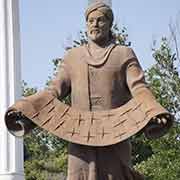
In the 8th century Transoxiana, the area between the Amu Darya and Syr Darya rivers, was conquered by the Arabs who brought Islam and many scientific and scholarly achievements; many notable scientists lived here and contributed to its development during the Islamic Golden Age, like Ibn Sina (known in the west as Avicenna), who was born in Bukhara around 980 and considered the father of early modern medicine; and Al-Farghani (known as Alfraganus in the west), born around 800 in Fergana (Farg’ona), who became the most famous Persian astronomer in the Abbasid court in Baghdad. The area of present-say Uzbekistan lay at the heart of the Sunni Iranian Samanid Empire, with its centres in Samarkand and Bukhara, from 819 to 999. At its greatest extend it also encompassed Afghanistan, large parts of Iran, Turkmenistan, Tajikistan, Kyrgyzstan, Kazakhstan and Pakistan. Towards the end of this period there came incursions of Kara Khanids, an alliance of nomadic Turkic people like the Karluks from the western Altai mountains in modern Kyrgyzstan and western Xinjiang (China). They had formed the Kara-Khanid Khanate in the 9th century and conquered Transoxiana; they ruled it between 999 and 1211. This signalled a shift from Iranian to Turkic predominance in Central Asia, although they gradually assimilated the Perso-Arab Muslim culture while also keeping parts of their Turkish culture. Later came incursions of the Turkic Seljuks and Kara-Khitans, a sinicized empire of Khitans (a nomadic people related to Mongols) in Central Asia that existed between 1124 and 1218 and included most of present-day Uzbekistan, although the Khwarazmian dynasty, Persianised Sunni Muslims of Turkic origin, ruled it from around 1077 to 1231, first as vassals of the Seljuks and Kara-Khitans.
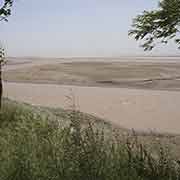
This all came to an end when it was conquered by the Mongol Empire under Genghis Khan. The Mongol invasion of Central Asia led to the displacement of some of the Iranian-speaking people of the region; their culture and heritage were replaced by that of the invading Mongolian-Turkic peoples. Bukhara, Samarkand, Urgench and other cities were invaded, resulting in mass murders and unprecedented destruction and portions of Khwarezm (a large oasis region on the Amu Darya river delta) were completely razed. Genghis Khan died in 1227, and the Mongol empire was divided among his four sons and family members; control of most of Transoxiana stayed in the hands of the direct descendants of Chagatai Khan, the second son of Genghis Khan. This was actually a time of prosperity and peace; most of present-day Uzbekistan was part of the Chagatai Khanate except Khwarezm, that was ruled by the Golden Horde, originally a Mongol and later Turkicized khanate that was established in the 13th century in the northwestern sector of the Mongol Empire. It reached its zenith during the rule of Sultan Mohammed Öz Beg, better known as Uzbeg or Ozbeg, who ruled it from 1313 to 1341; his name could also be the origin of “Uzbek”. After 1359 the Golden Horde declined and Khwarezm was briefly ruled by the Turkic Sufi Dynasty, until it was conquered in 1388 by Timur; Sufids then ruled Khwarezm as vassals of alternatively Timurids, Golden Horde and the Uzbek Khanate of Khiva till it came under Persian occupation in 1510.
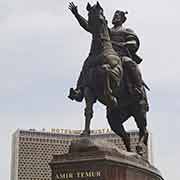
Timur (Tamerlane), born in 1336 in Shakhrisabz, 85 kilometres south of Samarkand, had emerged from the breakup of the Chagatai Khanate in the 1380s as the dominant force in Transoxania and, although not a descendant of Genghis Khan, he became the de facto ruler of Transoxiana and proceeded to conquer all of western Central Asia, Iran, the Caucasus, Mesopotamia, Asia Minor, and the southern steppe region north of the Aral Sea. He also invaded Russia before dying during an invasion of China in 1405. Timur was known for his extreme brutality and his conquests were accompanied by genocidal massacres in the cities he occupied. Scholars estimate that his military campaigns caused the deaths of 17 million people, amounting to about 5% of the world population at the time. However, in present-day Uzbekistan, 'Amir Temur' is now considered a national hero: he became a great patron of art and architecture and gathered together many artisans and scholars from the huge areas he had conquered into his capital Samarkand and imbued his empire with a rich Perso-Islamic culture. During his reign and the reigns of his immediate descendants, a wide range of religious and palatial construction masterpieces were undertaken in Samarkand and other population centres. He initiated an exchange of medical discoveries and patronised physicians, scientists and artists from neighbouring countries such as India. His grandson Ulugh Beg was one of the world's first great astronomers. It was during the Timurid dynasty that Turkic, in the form of the Chaghatai dialect, became a literary language in its own right in Transoxiana, although the Timurids were Persianate in nature, with Persian the primary language of administration and literary culture, regardless of ethnicity. After the death of Timur in 1405 the Timurid Empire split in half because of infighting among his descendants. This attracted the attention of Uzbek nomadic tribes living to the north of the Aral Sea and in 1501 Uzbek forces began a wholesale invasion of Transoxiana. The region split into three states: the Khanates of Bukhara, Khiva and Kokand.
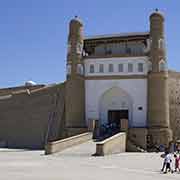
The Khanate of Bukhara existed between 1500 and 1785, ruled first by Shaybanids, a Persianized dynasty of Mongol origin (named after Muhammad Shaybani (ruled 1500-1510) who conquered Samarkand and Bukhara, as well as Herat and Balkh in Afghanistan) and later by the Janid Dynasty. Slave trade in the Khanate of Bukhara became prominent and was firmly established. Over the course of the 18th century, the emirs had slowly gained effective control of the Khanate of Bukhara and in 1785 it became the Emirate of Bukhara upon the assumption of rulership by the Manghit emir, Shah Murad. Because these rulers were not descended from Genghis Khan, they staked their legitimacy on Islamic principles and took the Islamic title of Emir instead of Khan. But in 1868, the emirate lost a war with Imperial Russia, which had colonial aspirations in the region. Russia annexed much of the emirate's territory, including Samarkand. In 1873 the remainder became a Russian protectorate and was soon surrounded by the Governorate-General of Turkestan. In the early 20th century there were calls for reform but the conservative emir, Mohammed Alim Khan, was unwilling to loosen his grip on power; in Russia the Bolshevik Revolution had just taken place and reformists turned to the Bolsheviks for military assistance. After an unsuccessful assault in March 1920, the Red Army managed to conquer the Emirate of Bukhara in September 1920 and replaced it with the Bukharan People's Soviet Republic.

The Khanate of Khiva existed in the historical region of Khwarezm from 1511 to 1920 and initially covered present western Uzbekistan, southwestern Kazakhstan and much of Turkmenistan. Its capital was moved from Konye-Urgench to Khiva in the early 17th century. There were many Persian slaves and even Russian ones as well. Uzbeks infiltrated this area and gradually their Turkic dialects evolved into the present Uzbek language, while the original Iranian Khwarezmian language died out. From 1695 Khiva was for some years a vassal of Bukhara which appointed two khans. The following centuries there had been incursions by Russians; in 1839 there was an unsuccessful campaign because of Russian slaves being held in Khiva; in 1848 the Russians built a fort at the mouth of the Syr Darya on the Aral Sea. And in 1873, after the Russian conquest of Tashkent and Samarkand, General Von Kaufmann launched an attack on Khiva consisting of 13,000 infantry and cavalry. The city of Khiva fell and on 12 August 1873 a peace treaty was signed that established Khiva as a quasi-independent Russian protectorate. After the Russian Revolution in 1917 a civil war broke out in the Khanate between pro- and anti-monarchists; opponents of the Khan and Turkmen tribesmen joined forces with the Bolsheviks at the end of 1919 to depose the khan. On 2 February 1920 Khiva's last Khan, Sayid Abdullah, abdicated and on 20 October 1923 the short-lived Khorezm People's Soviet Republic (later the Khorezm Socialist Soviet Republic, SSR) was created, before it was finally incorporated into the Soviet Union in 1924, with the former Khanate of Khiva divided between the new Turkmen SSR and Uzbek SSR.
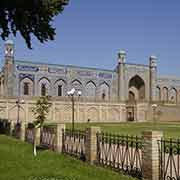
The Khanate of Kokand was established in 1709 when Shahrukh Khan, ruler of the Uzbek Ming tribe, declared independence from the Khanate of Bukhara in the eastern part of the Fergana Valley in Andijan; in 1740 its capital was moved to Kokand city. It reached its greatest territorial extend during the reign of Muhammad Ali (Madali Khan), who ruled from 1822 to 1842. During that time it included parts of modern Kyrgyzstan, eastern Uzbekistan, eastern Tajikistan and southeastern Kazakhstan. In 1839 a war with Bukhara broke out and in 1842 Bukhara’s forces under their leader Nasrullah Khan captured Margilan and killed Madali, who had fled there, with his whole family. Over the next two decades, a civil war raged in the khanate and there were Bukharan and Russian incursions. In 1865 the Russians conquered Tashkent and in 1868, a treaty was forced upon Kokand and turned it into a Russian vassal state. Its ruler, Khudayar Khan, who had ruled from 1845 (with an interlude by Emir Nasrullah between 1858 and 1865) was now powerless in his lavish palace; he was forced into exile in 1875 after revolts against his oppressive taxes and Russian rule. He was succeeded by his son, Nasir ad-din Abdul Karim Khan, who was resolutely anti-Russian, which provoked the annexation of Kokand: it was declared abolished with a statement by Russian Tsar Alexander II that he had been forced to “... yield to the wishes of the Kokandi people to become Russian subjects”. The former Khanate was incorporated into the Fergana Province of Russian Turkestan.
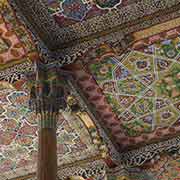
In 1905 there were ideas to unite Russian Turkestan, the Emirate of Bukhara and the Khanate of Khiva into one Pan-Turkic state. After the Russian revolution of 1917 the Bolsheviks in Tashkent created the Turkestan Autonomous Soviet Socialist Republic (ASSR). However, as the Bolsheviks had rejected Muslim participation in government, an anti-Bolshevik Provisional Government of Autonomous Turkistan (also known as Kokand Autonomy) was proclaimed in December 1917 by the Islamic Council and the Council of Intelligentsia and the Kokand Autonomous State became independent under Mustafa Chokai-Beg (Chokayev). Although Lenin had advised “Muslim self-determination”, the authorities in Tashkent declared the Kokand Autonomy “counter-revolutionary” and on 30 January forces of the Tashkent Soviet laid siege to Kokand, whose population tried to defend themselves with hunting rifles. On 20 February the city fell and Soviet troops massacred at least 5,000 (some estimates up to 10,000) of the city’s population and one third of the old city was reduced to ruins. But the local people continued to fight Bolshevik forces until the 1920s, part of the Basmachi revolt, an uprising against Russian Imperial and Soviet rule by the Muslim peoples of Central Asia, which had started with forced conscription of Muslims into the Russian army in 1916. However, the Bolsheviks prevailed and on 30 April 1918 the Turkestan Socialist Federative Republic was proclaimed, soon renamed Turkestan Autonomous Soviet Socialist Republic. Kokand was absorbed into the Turkestan ASSR and later into the Uzbek Soviet Socialist Republic. The Turkestan ASSR lasted until 27 October 1924 when the faction of Communists favouring dividing Soviet Turkestan into smaller ethnic or regional units won over those favouring a larger Pan-Turkist state. The Turkestan ASSR was dissolved and split along ethnic lines determined by Vladimir Lenin’s Commissar for Nationalities, Joseph Stalin, into Turkmen SSR (now Turkmenistan), Uzbek SSR (now Uzbekistan) with the Tajik ASSR (now Tajikistan), Kara-Kirghiz Autonomous Oblast (now Kyrgyzstan), and Karakalpak Autonomous Oblast (now Karakalpakstan). Considering the convoluted borders, especially between Uzbekistan, Kyrgyzstan and Tajikistan and the fact that in all three countries live sizeable minorities of the others along those borders, it is hard to see Stalin really knew or cared where those ethnic lines were. The reality was that these lines had always been very blurred and local authorities laid contradicting claims.
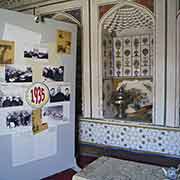
On 27 October 1924 Uzbek Soviet Socialist Republic was proclaimed, with its capital in Samarkand. It included the Tajik ASSR until 1929, when that autonomous republic was upgraded to a full SSR. In 1930 the capital of the Uzbek SSR was relocated to Tashkent and in 1936 the Karakalpak ASSR was transferred from the Kazakh SSR to the Uzbek SSR. After the Second World War there were a few more minor border changes between Kazakhstan and Uzbekistan. The Uzbek branch of the Soviet Communist Party, was the only legal political party from 1925 until 1990. In 1928, the collectivisation of land into state farms was initiated, which lasted until the late 1930s and in the years 1937-1938, as in the rest of the Soviet Union, there were brutal purges in which many alleged nationalists were executed, including Fayzulla Khojayev, the first prime minister. Islam was actively discouraged, most mosques closed and religious schools turned into anti-religious museums. Because many industries were relocated to Uzbekistan, large numbers of Russians and other Slavic nationalities altered the ethnic makeup of the republic. And in the early 1960 a decision was taken to greatly increase cotton production; because cotton requires lots of water, the Amu Darya and Syr Darya rivers were diverted to irrigate the desert. Although irrigation canals had already started to be constructed in the 1940s, these were poorly built and water leaked and evaporated. And now, as part of a 5-year plan, it was stepped up and the Aral Sea, where the rivers flowed in, started to shrink at an alarming rate. This was of no importance to Soviet planners: they were fully aware of what happened. From 1960, when the Aral Sea was one of the four largest lakes in the world, to 1998, the sea’s surface shrank by 60% and volume by 80%. Now there are only three small separate bodies of water left.

On 20 June 1990 the Uzbek SSR adopted the Declaration of State Sovereignty within its borders and became a sovereign part of the Soviet Union with its own legislation, referred to as Soviet Uzbekistan. Islam Karimov, who had been the First Secretary of the Communist Party of Uzbekistan since 1989, became the President of the Uzbek SSR a year later and declared Uzbekistan an independent nation on 31 August 1991. He won its first presidential election later that year and was re-elected in 2000, 2007 and 2015, each time receiving over 90 percent of the vote; there were widespread reports of fraud. During his tenure international human rights watchdogs reported widespread human-rights violations, including modern slavery: forced labour by state employees and also students, including children, to harvest cotton, that has remained the main crop, in spite of the environmental consequences. It has been reported that almost 4% of the country’s population worked as modern slaves, mainly in the cotton industry. In 2005 civil unrest resulted in hundreds of people being killed. Islam Karimov died on 2 September 2016; his successor, Shavkat Mirziyoyev started a new course, described as a “A Quiet Revolution” and “Revolution from Above”. He abolished cotton slavery, systematic use of child labour, exit visas, he introduced tax reform, created four new free economic zones, and amnestied many political prisoners. Its currency, the Som, with its black market, at last became fully convertible in September 2017. Relations with neighbouring countries of Tajikistan, Kyrgyzstan, and Afghanistan have now drastically improved: Uzbekistan, a beautiful country with a fascinating history now also seems ready to shake off the shadows of the Soviet past and become a truly modern nation.


